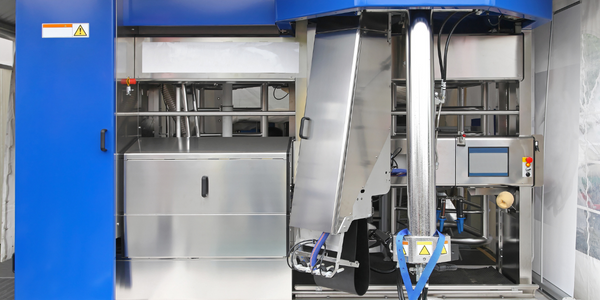Framework Scorecard: Enabling a Global Company to Drive & Track Site Implementation of EHS Program Elements

Customer Company Size
Large Corporate
Region
- Europe
Product
- Benchmark Gensuite Framework Scorecard
Tech Stack
- Data Mining
- Data Analytics
Implementation Scale
- Enterprise-wide Deployment
Impact Metrics
- Productivity Improvements
- Digital Expertise
Technology Category
- Analytics & Modeling - Data Mining
Applicable Functions
- Discrete Manufacturing
- Quality Assurance
Use Cases
- Process Control & Optimization
- Predictive Quality Analytics
Services
- System Integration
- Data Science Services
About The Customer
The customer is a publicly held, global industrial company. They are headquartered in Europe and have over 250 locations with 50,000 employees. They are top performers in their markets. The company launched an initiative to systematically implement EHS and Sustainability program elements to standardize key processes at all of their global sites.
The Challenge
The company launched an initiative to systematically implement EHS and Sustainability program elements to standardize key processes at all of their global sites. The challenge was to execute the initiative via a digital solution that enabled sites to adopt applicable program elements in a prioritized sequence with the concurrence of business program leaders, while providing continuous visibility to corporate management. The company needed to implement a phased priority scheme to manage EHS&S elements and set up a system that provided company-wide visibility to global sites. They also wanted to leverage data mining capabilities to easily identify risks across sites and drive corrective actions.
The Solution
The company worked with Benchmark Gensuite to utilize a digital application, the Benchmark Gensuite Framework Scorecard, to facilitate the rollout and adoption of management system program elements across all of their sites, leveraging their previously established Benchmark Gensuite platform for EHS compliance and sustainability metrics tracking. The solution enables site-level assignment and tracking of individual program elements and process implementation expectations. It standardizes implementation through targeted implementation guidance notes and best practice sharing. It also provides visibility to site, business and corporate management on milestones accomplished by program element and analytical tools to identify key program gaps/needs.
Operational Impact

Case Study missing?
Start adding your own!
Register with your work email and create a new case study profile for your business.
Related Case Studies.

Case Study
System 800xA at Indian Cement Plants
Chettinad Cement recognized that further efficiencies could be achieved in its cement manufacturing process. It looked to investing in comprehensive operational and control technologies to manage and derive productivity and energy efficiency gains from the assets on Line 2, their second plant in India.

Case Study
Airbus Soars with Wearable Technology
Building an Airbus aircraft involves complex manufacturing processes consisting of thousands of moving parts. Speed and accuracy are critical to business and competitive advantage. Improvements in both would have high impact on Airbus’ bottom line. Airbus wanted to help operators reduce the complexity of assembling cabin seats and decrease the time required to complete this task.

Case Study
Improving Production Line Efficiency with Ethernet Micro RTU Controller
Moxa was asked to provide a connectivity solution for one of the world's leading cosmetics companies. This multinational corporation, with retail presence in 130 countries, 23 global braches, and over 66,000 employees, sought to improve the efficiency of their production process by migrating from manual monitoring to an automatic productivity monitoring system. The production line was being monitored by ABB Real-TPI, a factory information system that offers data collection and analysis to improve plant efficiency. Due to software limitations, the customer needed an OPC server and a corresponding I/O solution to collect data from additional sensor devices for the Real-TPI system. The goal is to enable the factory information system to more thoroughly collect data from every corner of the production line. This will improve its ability to measure Overall Equipment Effectiveness (OEE) and translate into increased production efficiencies. System Requirements • Instant status updates while still consuming minimal bandwidth to relieve strain on limited factory networks • Interoperable with ABB Real-TPI • Small form factor appropriate for deployment where space is scarce • Remote software management and configuration to simplify operations

Case Study
Developing Smart Tools for the Airbus Factory
Manufacturing and assembly of aircraft, which involves tens of thousands of steps that must be followed by the operators, and a single mistake in the process could cost hundreds of thousands of dollars to fix, makes the room for error very small.








